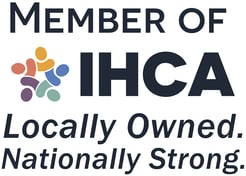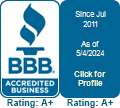Given that one in four seniors has type II diabetes, it’s very likely that your client already knows how serious the condition can become. However, even if your client already has his or her own daily routines in place, an extra set of hands and eyes can go a long way in making sure the condition doesn’t worsen overnight. If you have a client or loved one with type II diabetes, take a look at our comprehensive diabetes management checklist to see how you can help them look and feel their best from head to toe!
The Head
Prioritize your client’s mouth care.
People with diabetes are much more likely to suffer from gum disease, oral fungus, dry mouth, and more. Go above and beyond by encouraging your client to prioritize his or her oral hygiene. Here are some tips:
- Have your client brush his or her teeth with a soft-bristled brush after every meal
- Make sure your client flosses at least once daily
Caregiver Tip: You might consider packing a flosser and a toothbrush travel kit, especially if you and your client decide to eat out.
Pay extra attention to your client’s skincare needs.
People with diabetes are also extremely susceptible to contracting infections from skin wounds. Even something small, such as a callus or a cut, can lead to serious problems. Give your client a hand-held mirror for hard-to-reach areas and offer to help check their hard-to-see areas each and every day. Be on the lookout for spots, blisters, and sores.
Caregiver Tip: Dry skin is much easier to damage. Mild soap and warm (not hot) baths and showers are the best for preventing dry skin. Help your client use a doctor-approved moisturizer (everywhere but between the toes) and avoid foot soaking. In addition, make sure that your client is thoroughly dry before dressing, especially between the toes.
The Body
Help monitor and record your client’s daily blood sugar levels.
Whether your client needs help actually measuring his or her blood sugar or only needs a reminder to do so, daily monitoring provides vital, ongoing feedback that your client’s healthcare team can use to discover patterns and trends. The data can also help guide your client towards more informed decisions regarding which food and exercise plans are most effective, as well as which medications are working most successfully. Encourage your client to record these blood sugar levels in a logbook each and every day.
Caregiver Tip: Keep all of the supplies you and your client use to regularly monitor blood sugar levels in one convenient place. In addition, set reminders on your client’s watch, alarm clock, or smartphone.
Make sure your client takes his or her daily medications.
Make sure your client takes all of his or her daily medications. Your level of involvement in your client’s medication regimen will vary from client-to-client and also may increase as he or she ages. Always follow all advice given by your client’s healthcare team and immediate family.
Caregiver Tip: You can find pill organizers at your local pharmacy. When choosing your client’s pill organizer, be sure to find one with easy-to-read labels that can be closed and opened by both you and your client.
Ensure your client maintains a regular and balanced diet.
Keep blood sugar levels stable by sticking to a relatively strict meal routine that includes several healthy snacks in between meals. Always follow the meal plan provided by your patient’s health-care team, but it’s usually a good idea to prioritize carbohydrates for maximum energy.
Caregiver Tip: Do not ever skip meals because your client’s blood glucose can drop very quickly. Always have a healthy snack on hand!
Make sure your client stays hydrated.
Encourage your client to drink lots of caffeine-free and sugar-free fluids to keep his or her body and skin extra hydrated.
Caregiver Tip: Once a person notices thirst, he or she is most often already dehydrated. As soon as your client finishes a glass of water, go ahead and fill it up again. More frequent trips to the restroom will be helpful in preventing urinary tract and kidney infections, which are common in patients with diabetes.
Encourage your client to be more active.
Daily exercise not only supports a healthy weight, but it can also improve insulin sensitivity due to its ability to lower blood glucose levels. It’s usually a good idea to exercise one hour after eating and encourage your client to check his or her blood sugar levels before, during, and after exercise. However, keep in mind that it’s always a good idea to consult your client’s healthcare team before beginning a new exercise program.
Caregiver Tip: Don’t hesitate to exercise with your client! Research shows that an exercise buddy provides more motivation than exercising alone!
Do your part to minimize stress.
Stress can affect your client’s blood sugar. To ease stress, have your client consider walking, deep breathing exercises, gardening, meditation, listening to music, or working on a hobby.
Caregiver Tip: Whatever happens, do not bring any of your own stress into your client’s life. Even though you both have probably developed a deep and friendly relationship, always do your best to keep your work life and your personal life very separate.
The Feet
Pay extra attention to your client’s feet and foot care routine.
Again, people with diabetes are very prone to skin infections, most often occurring on the feet. What’s worse, those with nerve damage may not even feel a cut or a sore. Even something you think is small can develop into an infection that if not addressed, can lead to a full amputation of the foot. In addition to regularly checking for red spots, blisters, calluses, and foot sores:
Check for ingrown toenails daily as they can lead to infection. Regularly trim nails straight across with a nail clipper and then smooth them with an emery board. Do not round off nail corners.
- After bathing, ensure your client dries off between the toes so as to prevent infection.
- Discourage your client from wearing open-toed shoes or sandals.
- Encourage your client to always keep shoes on, even when inside his or her own home.
- Soft leather, lace-up shoes with cushioned soles offer great support. If your client is at home, closed toed slippers and a pair of comfortable socks should do the trick. Ensure your client’s socks aren’t so tight that they cut off circulation.
- Help your client use a doctor-approved moisturizer, but do not put moisturizer in between your client’s toes.
- Gently smooth calluses with a pumice stone or emery board by moving it in one direction only.
- Wash minor cuts with soap and water. Monitor them daily to ensure that they are healing properly.
- If your client purchases new shoes, he or she should wear them for two hours and then check for cuts or blisters. Repeat this routine until the shoes are worn-in properly.
- Do not pop your client’s blisters. Wash them with soap and water and then apply an antibiotic cream. Call your client’s doctor if it does not heal within a few day’s time.
Caregiver Tip: Never be afraid to reach out to your client’s family or healthcare team. If you see something that bothers you, speak up! It’s always better to be safe than sorry!
- Public Health in the Age of COVID - September 15, 2021
- World Elder Abuse Day June 15, 2021 - June 28, 2021
- World Elder Abuse Day - June 15, 2021




